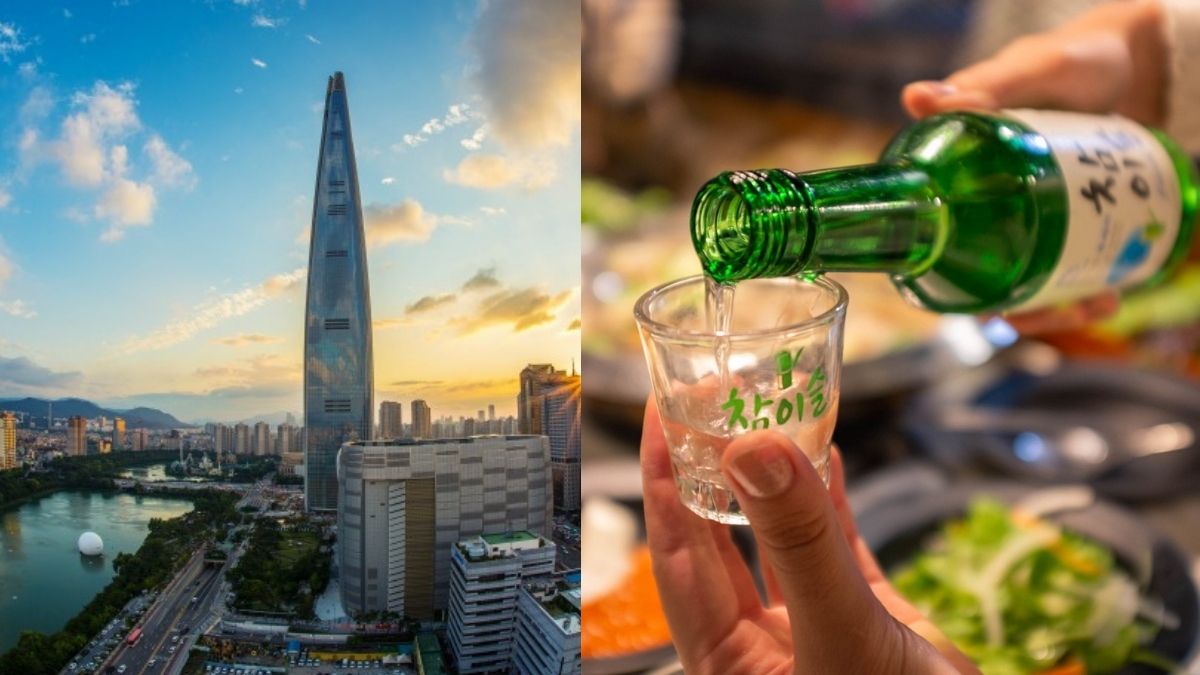
Whatever little I know, or actually been fascinated by, about South Korea, is thanks to the American Euny Hong’s incredible book, heavily recommended for anyone who follows pop-culture, called The Birth Of Korean Cool.
Hong beautifully lays out how, unlike any nation in the world, the Korean government, in the late ‘90s, personally motorized, funded its soft-power, forming, nurturing K-Pop bands (very similar to American pop), Korean cinema (crazier than Tarantino), and consumer-based technology (Samsung, etc), to improve its image/standing in the world— post the East Asian economic crisis.
In the process, Hong provides a unique inroad to a society, full of its own quirks, that appears almost impossible for an outsider to penetrate. Or so I realised, being in Seoul, although only for about 36 hours, but pulling off an all-nighter, across its various districts—a lot like Bill Murray in the frighteningly hectic Tokyo in Lost In Translation (2003). Or, well, nothing like that at all, actually.
Given my evening chiefly comprised: A fancy cat-café serving lemonades, and food that customers are supposed to feed random, fat kittens chilling all over. A massive pub, with a thousand board games—where you paid for the table, by the hour. The karaoke bar that doesn’t serve alcohol, and so you book private rooms, in large groups, forced to sing— stone-cold sober.
Or the huge multi-decked night-club, buzzing around 6 am (Tuesday morning), as we surveyed a fully Korean crowd, rolling our bewildered, big eyes, while not once did anyone even glance at us for a sec, looking at how different we were from the rest—barring a couple of guys, gently making PC, before peddling their cocaine.
In all that blue blistering barnacles, thundering typhoon madness, absolutely the only thing that made sense to me were lines of green bottles being knocked back, one table after another, at a bar the size of an indoor stadium that served only that transparent drink, to be shared in ‘cutting chai’ shot glasses. That was soju. What’s soju? Mainly consumed by Koreans, it is the frickin’ highest selling booze in the world!
What does it taste like? Honestly, I don’t drink for taste, in the sense that I can hardly gargle ‘full-bodied’ nectar in my throat, upturned from a cylindrical bowl, whiffing the aroma, closing my eyes in deep meditation, to judge with supreme authority if the rotten grape-juice is ‘fruit forward’, ‘savoury’, ‘smoky’, has ‘sweet tannin’ or a ‘tart finish’.
Suffice it to say, soju is essentially vodka (same taste), with less than half the alcohol content. Which is how people should ideally drink vodka—in small 30 ml measures, rather than large 60 ml (the option being available in Indian bars), so you can carry on for much, much longer, and forget things that you can’t fix in life. And yet wake up in fine position the next day, ready to change stuff that you can!
For some reason I have felt more clear-headed after a night of soju that bingeing on beers (my staple poison). Sure, I don’t want to over-sell, but that does say a lot. Because of its low alcohol strength, there are bars in the US that easily hoodwink their legal permits to serve only beer and wine, with selling popular vodka-based cocktails (Cosmopolitan, Bloody Mary etc), mixing soju in it instead.
And yet, why is it that the world hasn’t quite woken up to soju yet? Because, I suspect, the alcohol industry is essentially an oligopoly, with just a few western players owning practically all the top brands, with deep global distribution networks—making the game all about whisky, brandy, gin, beers, rum, vodka.
Soju also looks similar to the delicious Turkish raki, which in turn, tastes similar to the fine French pastis, except, unlike soju, those drinks turn milky when mixed with water, and feel like the Italian sambuca on the palette. Without doubt though, taste-wise, and even in terms of alcohol levels, soju’s ‘chhota bhai’ (only because it got introduced to the US markets later) is the Japanese shochu.
In its 132 year old history, Coca Cola has just, for the first time, entered the booze market, for now in Japan, with Chu-Hi, a canned drink made up of shochu, sparkling water, and mild flavours. Why would Coca Cola do that? Because, quite frankly, people are going to eventually stop drinking its sodas with bagfuls of sugar.
Refined sugar is the new global villain, in line with cigarettes, or perhaps in public perception even worse, since sugar addiction is often compared to cocaine. Sensing that route towards fitness, a replacement for hard liquor with a drink that naturally tastes the same but is half as potent is also likely to be loved more.
I can’t seem to find soju anywhere in Mumbai. The stock in my fridge is fast depleting. Coca Cola (or Jinro, Chum Churum, Saan or Andong, if you’re listening), can you please help?
